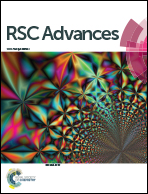Hollow carbon-shell/carbon-nanorod arrays for high performance Li-ion batteries and supercapacitors†
Abstract
N-doped hollow hierarchical peanut-like carbon-shells with nanorod arrays on the surface and interconnected networks in the core are prepared, which display rich porosity, superhigh specific surface area and a high degree of graphitization. The unique composition and hierarchical structure of the carbon resulted in very promising electrochemical energy storage performance.


 Please wait while we load your content...
Please wait while we load your content...